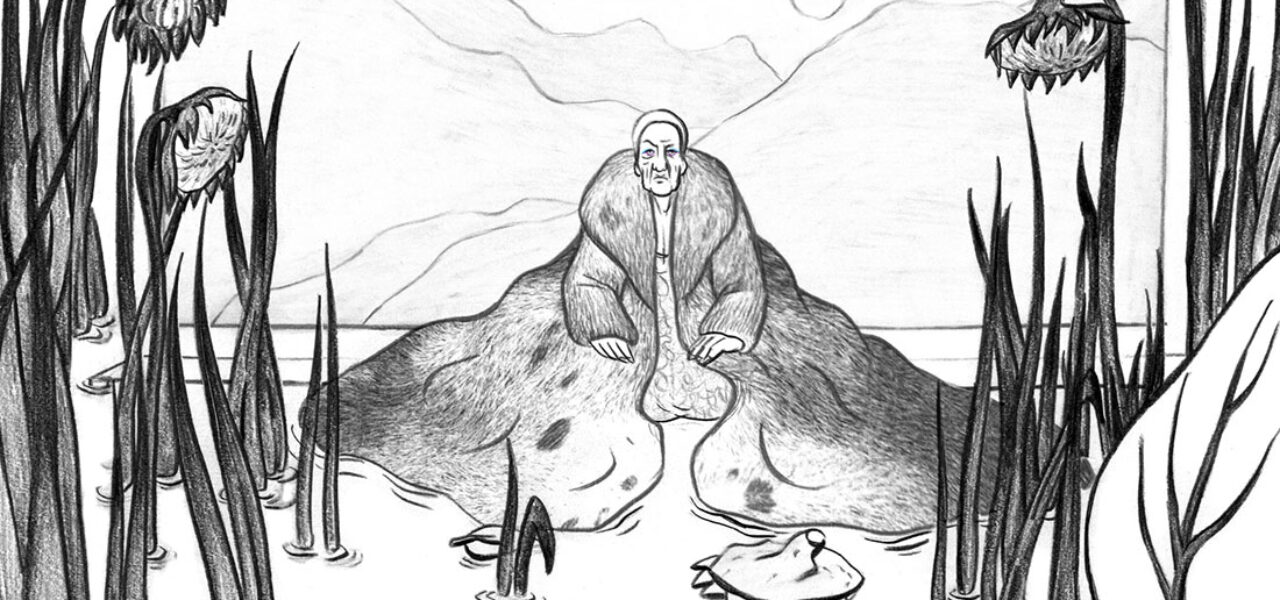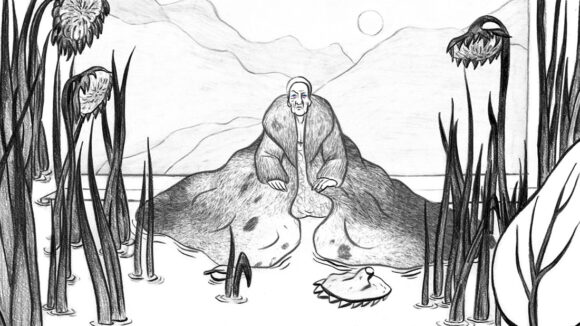

Exclusive Trailer Premiere: Marta Pajek’s Post-Apocalyptic Short ‘Impossible Figures And Other Stories I’
The latest (and concluding) installment of Marta Pajek’s disorienting and mysterious Impossible Figures and Other Stories trilogy is set to world premiere this month at the Ottawa Int’l Animation Festival.
We’re delighted to share the exclusive debut of the film’s trailer:
Despite being the final film in the trilogy, Impossible Figures And Other Stories I is actually the set-up to the other two films, which were labeled as parts II and III. The earlier films were big hits on the festival circuit, winning dozens of awards including grand prizes at Stuttgart and GLAS, with Part III premiering at Cannes.
Pajek explains in the notes to her film why she chose to create the films out of order:
Each of the stories explores a different space. After the space between two people (Part III) and the space within a house (Part II), Part I takes the audience into a city. I decided that, contrary to its title, this film should be the last of the three to be made. I felt that I needed more time and experience to tackle a subject that goes so far beyond my own experience and knowledge — namely, the failure of utopias, the fall of our civilization, the end of humanity. It almost seemed arrogant to take on the subject at all. But the vision of the fallen city intrigued me. After all, I am one of its citizens.

Pajek’s sixteen-minute production begins with a massive explosion and follows a mysterious and elegant elderly woman who wanders the deserted city streets, recalling what was and what could have been. Though the film was developed long before the pandemic, its production during the Covid-era gave new meaning to its story. Pajek speaks about how the pandemic and other environmental factors informed her filmmaking:
During the process, I had the opportunity to spend time in cities that have been strongly marked by history — Warsaw, Vienna, Moscow. All of those places, with their grandiose architecture, museums stacked with artifacts, and painful pasts, inspired me and found their way into the film, whose protagonist is the city itself.
The first draft of the story was written together with the other two parts, but it evolved and ripened with time, during which I realized that eventually, just like the other two, this would be a film about what I don’t understand, rather than what I know. Rather than exposing faulty mechanisms, I aimed to get in touch with the fear of the inevitable end, and the frustration of one’s helplessness in the face of it.
Gradually, as I was developing the story, the reality around me seemed to adjust to that pre-apocalyptic mood. Part of the production was taking place in Montreal, in the old National Film Board headquarters, which was being slowly emptied and dismantled before the move to the new building. When I arrived, the enormous NFB logo (known as “man seeing”) had already been removed from the top of the building. It felt like the end of an era in filmmaking history — an era of geniuses like Norman McLaren, of room-size projectors, brilliant inventions, unique instruments like the pinscreen, of vaults and endless maze-like corridors. A reign of materials, objects and machines, but also of people and stories.
When the pandemic began, production was in full swing — we headed into isolation and switched to online meetings. Abandoned city streets became our everyday reality, and the confinement in one’s own home made it seem like the apocalypse was already creeping in on us. I had an uneasy feeling that the story we were telling wasn’t some far-fetched fantasy, but rather the world we suddenly woke up in.
We finished the film in a different reality than the one we inhabited when the story was first written. It is with much anxiety that I am sending this last part of the triptych into the world, but I hope it will resonate with audiences and that they find in it a note of consolation or strength that comes from connecting with one’s fears.
Impossible Figures and Other Stories I is a hybrid of hand-drawn animation (on paper!) and cg. The short is a co-production between Warsaw, Poland’s Animoon and the National Film Board of Canada. Piotr Szczepanowicz and Grzegorz Wacławek were producers for Animooon, and Maral Mohammadian did the same for the NFB. The executive producer was Michael Fukushima, who recently retired from the NFB.
Watch Cartoon Brew’s interview with Pajek about the first two films in the Impossible Figures trilogy:
